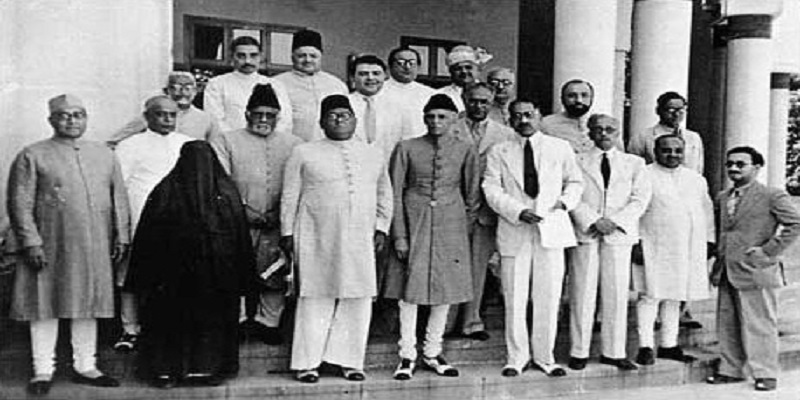The Lahore Resolution Pakistan's Destiny in 1940
The Lahore Resolution, also known as the Pakistan Resolution, holds a significant place in the history of the Indian subcontinent, particularly in the context of the struggle for independence and the subsequent partition of British India. Adopted on March 23, 1940, during the annual session of the All-India Muslim League in Lahore, this resolution laid the foundation for the demand for a separate nation for Muslims. The Lahore Resolution marked a crucial turning point in the political landscape of British India, shaping the trajectory of events that would lead to the creation of Pakistan in 1947.
Background:
To understand the Lahore Resolution, one must delve into the complex historical, political, and social context of British India in the first half of the 20th century. The Indian National Congress, at the forefront of the struggle for independence, advocated a united, secular India where Hindus and Muslims would coexist. However, the Muslim League, led by figures like Muhammad Ali Jinnah, increasingly felt that the interests of Muslims were not adequately represented within a unified India. The demand for a separate Muslim state gained momentum as the political differences between the Congress and the League deepened.
The Lahore Session:
The Lahore Resolution was passed during the 27th annual session of the All-India Muslim League, held at Iqbal Park in Lahore. The session began on March 22, 1940, and continued until March 24, with prominent leaders such as Muhammad Ali Jinnah, Liaquat Ali Khan, and others in attendance. The resolution was moved by A.K. Fazlul Huq, the then Chief Minister of undivided Bengal, and seconded by Chaudhary Khaliq-uz-Zaman.
Key Provisions of the Lahore Resolution:
The Lahore Resolution consisted of several key provisions that encapsulated the demands of the Muslim League and laid the groundwork for the establishment of a separate nation for Muslims:
- Independent States for Muslims:
The central proposition of the resolution was the demand for the creation of independent states in regions where Muslims were in a majority. The resolution explicitly stated, "That geographically contiguous units are demarcated regions which should be constituted, with such territorial readjustments as may be necessary, that the areas in which Muslims are numerically in a majority, as in the North-Western and Eastern zones of India, should be grouped to constitute independent states."
- Autonomy and Sovereignty:
The resolution emphasized that the independent states for Muslims should be autonomous and sovereign entities, and they should be free to frame their own constitutions. This highlighted the League's commitment to securing political, economic, and cultural rights for Muslims in these regions.
- Protection of Minorities:
Another important aspect of the resolution was the assurance that the rights and interests of non-Muslim minorities in the proposed Muslim states would be safeguarded. This reflected a commitment to pluralism and protection of minority rights within the envisioned independent states.
- Constitutional Safeguards:
The resolution called for constitutional safeguards to ensure the protection of the rights and interests of Muslims in the rest of India where they were not in the majority. This indicated a willingness to coexist peacefully with non-Muslims in areas where Muslims were a minority.
Impact and Significance:
The Lahore Resolution had profound implications for the course of Indian history and the struggle for independence. Its passage marked a formal articulation of the demand for a separate nation for Muslims, distinct from the vision of a united, secular India promoted by the Indian National Congress. The resolution transformed the political dynamics, setting the stage for intense negotiations and debates in the years that followed.
The demand for a separate Muslim state gained momentum in the subsequent years, and the Muslim League's position was further solidified during the Cabinet Mission Plan (1946) and the subsequent Direct Action Day in Calcutta. The culmination of these events eventually led to the partition of British India in 1947 and the creation of two independent nations—India and Pakistan.
Legacy and Reflections:
The Lahore Resolution remains a pivotal document in the history of the Indian subcontinent. It reflects the political aspirations, concerns, and identity of the Muslim community in British India during a crucial period. The subsequent creation of Pakistan and the partition of India have left a lasting impact on the region's geopolitics, shaping the destinies of millions of people and influencing the course of South Asian history.
The resolution also raises important questions about identity, nationalism, and the challenges of accommodating diverse communities within a single political entity. The debates surrounding the Lahore Resolution and its aftermath continue to resonate in contemporary discussions about the nature of the state, religious pluralism, and the complexities of nation-building in the Indian subcontinent.
The Lahore Resolution of 1940 stands as a defining moment in the quest for independence and the subsequent partition of British India. Its provisions, calling for the creation of independent states for Muslims, set in motion a series of events that would profoundly shape the political landscape of the region. The resolution remains a crucial historical document, shedding light on the complex and multifaceted dynamics that ultimately led to the emergence of Pakistan as a separate nation.

